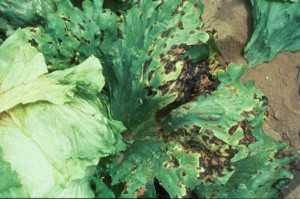How Bad Weather May Mean Good News For Your Crops
Congratulations to Winter Olympics Team USA. Our American athletes competed admirably, represented our nation well in Sochi, Russia, and frequently medaled despite stiff competition and challenges. One of the most critical challenges that athletes had to weather was, in fact, the weather.
For the Sochi Olympics, held in what is considered subtropical Russia, the weather was an all-important factor that dictated the feasibility and quality of the events. With daytime temperatures reaching the mid-60s, half-pipe snowboarders fought through bumpy, grainy ice and slope-style skiers sloshed through slushy snow. Thick mountain fog interfered with the snowboard cross race and prevented biathlon competitors from seeing targets. In many ways, weather was everything.
Rainless Production Period
When it comes to crop diseases in the Western U.S., weather is also everything in many ways. One of the most important weather factors is that much of the Western region is rainless during the main part of the growing season. For most of the region, rain falls only during the late autumn through early spring, providing the West with a long summer and early autumn run that is dry.

Many diseases, such as bacterial leaf spot of lettuce, are favored by rain and high humidity weather conditions. Photo credit: Steve Koike.
Because a majority of fungal and bacterial pathogens are favored by splashing water and the wet conditions created by rain, lack of rain gives Western commodities an edge against plant diseases. Late blight of tomato and potato, Septoria and Cercospora blights of celery, Septoria blight of parsley, bacterial leaf spot of lettuce, and a host of other diseases tend to be less severe in this region because of lack of rain when crop production is at its peak. Compared to other parts of the country, Western growers likely apply fewer fungicide sprays because of this reduced disease pressure.
Low Humidity
Related to, but distinct from, rain is the overall relative humidity in a region. Parts of the Southeast and Eastern seaboard can have high overall levels of humidity, and this high humidity, coupled with warm temperatures, drives and encourages bacterial blights, bacterial soft rots, and other diseases that row crop farmers must battle.
In contrast, a great portion of the Western region has a relatively lower humidity level. Growers in the West are not exempt from seeing the same diseases; however, generally these problems are less severe, less aggressive, and therefore are more manageable.
Western Seed Production
This drier, rainless summer is a major reason why seed production is carried out in a number of western states. Pathogenic fungi and bacteria that are carried in and on seed are a significant threat to vegetable crop production.
Planting and growing vegetable seed crops in the drier climate contribute greatly to decreased incidence and concern with diseases caused by these pathogens. The resulting seed produced from this region is of high quality. Examples of a few seedborne diseases are: anthracnose, bacterial blight, and halo blight of bean; Alternaria diseases, bacterial leaf spot, and Cercospora leaf spot of carrot; Pseudomonas and Septoria blights of celery; Alternaria leaf spot, black leg, and black rot of crucifers; angular leaf spot, anthracnose, and bacterial fruit blotch of cucurbits; bacterial canker, speck, and spot of tomato.
The Long Run
Extremely long growing seasons also characterize production systems in the west. The weather and climate found in the region allow for production for most of the year. While Eastern and Mid-Western states are still shoveling snow, West Coast growers are going full throttle into the spring production season.
This feature of Western agriculture is particularly evident in California’s coastal region, where crops can be grown almost 12 months of the year. Since many of the coastal vegetable crops consist of short-cycle commodities such as leafy greens (lettuce, spinach, mustards, cilantro, parsley), broccoli, and cauliflower, any particular block of ground could be planted to as many as three to four different crops in a 12-month period.
Of course, bad weather strikes the West as well. Currently, “bad weather” for Californians means little rain, even during the winter. Lack of summer rain may be good for deterring plant diseases, but lack of rain for several years means that the Golden State is facing drought conditions that will limit and influence agricultural activities.
East or west, north or south, battling the weather remains the annual Olympian task for growers everywhere.










